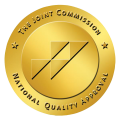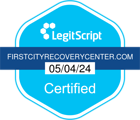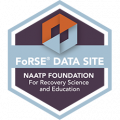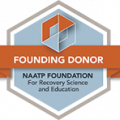Alcohol recovery progresses through withdrawal (days 1–7), early stabilization (weeks 2–4), habit-building (months 2–3), relapse prevention (months 4–6), and long-term sobriety milestones (one year+). Support, structure, and resilience are key.
Monroe Street Sober Living, in Indiana, provides a safe, structured environment for recovery, offering transitional housing, support, and resources to help individuals maintain long-term sobriety
Alcohol Addiction and Recovery
Alcohol addiction is a serious condition that affects both physical and mental health. It often begins with occasional drinking but can escalate into dependency, leading to negative consequences in relationships, work, and overall well-being. Addiction alters brain chemistry, making it difficult to stop despite harmful effects. Recognizing the problem is the first step toward recovery.
Recovery is a gradual process that requires commitment, support, and self-awareness. Professional treatment, therapy, and support groups help individuals rebuild their lives. Healthy coping mechanisms, such as exercise and mindfulness, aid healing. With determination and the right resources, long-term sobriety is possible..
What is the Alcohol Recovery Timeline?
The alcohol recovery timeline varies based on individual circumstances but generally follows key phases. In the first 24–72 hours, withdrawal symptoms peak, including nausea, anxiety, and tremors. Severe cases may experience delirium tremens, requiring medical care. Over the next few weeks, physical symptoms ease, but psychological challenges like mood swings and cravings emerge.
Beyond the first few months, steady improvement occurs as individuals develop coping mechanisms and rebuild habits. Therapy and support groups aid in maintaining sobriety, while lifestyle changes reinforce recovery. Long-term success involves addressing underlying issues and fostering resilience, making lasting sobriety achievable.

The First 24–72 Hours: Acute Withdrawal Symptoms
The first 24–72 hours of alcohol withdrawal are often the most intense. Symptoms begin within hours of the last drink, including anxiety, sweating, nausea, and tremors. Severe cases may experience hallucinations or seizures, requiring medical attention. Hydration and proper nutrition help ease discomfort, but medical supervision is crucial for high-risk individuals.
As withdrawal progresses, symptoms peak before gradually subsiding. While physical effects lessen, mood swings and cravings can persist. Medications may be prescribed to manage symptoms and reduce complications. Support from healthcare providers and loved ones is essential, marking this phase as a critical step toward recovery.
Days 4–7: Early Stabilization and Physical Recovery
By days 4–7, the body begins stabilizing after the initial withdrawal phase. Physical symptoms like nausea, headaches, and tremors decrease, allowing for better sleep and appetite restoration. While withdrawal discomfort fades, fatigue and mood swings may persist. Staying hydrated and eating nutrient-rich foods supports healing, and light exercise can boost energy levels. Medical professionals may still monitor progress to ensure safety.
Psychologically, cravings and emotional fluctuations remain a challenge. Anxiety and depression can surface as the brain adjusts to functioning without alcohol. Therapy and support groups provide guidance, reinforcing commitment to sobriety. Establishing healthy routines is key to long-term success.
Week 2 to Week 4: Mental and Emotional Adjustments
Between weeks 2 and 4, individuals in recovery experience significant mental and emotional shifts. While physical withdrawal has passed, psychological challenges emerge, such as mood swings, anxiety, and depression. Cravings can persist, and emotions previously numbed by alcohol may feel overwhelming. Sleep patterns continue improving, but occasional restlessness is common. Therapy and support networks become essential for navigating these emotional ups and downs.
As clarity returns, individuals reassess relationships, triggers, and life goals. Emotional resilience strengthens with mindfulness, journaling, and exercise. Establishing routines provides stability, while community support reinforces motivation. This phase is key in solidifying commitment to long-term sobriety.
Months 2–3: Building New Habits and Coping Strategies
During months 2–3 of recovery, individuals begin establishing healthier habits and reinforcing their commitment to sobriety. The brain continues healing, leading to improved mental clarity and emotional stability. While cravings may still arise, they become more manageable with coping strategies like mindfulness and structured routines. Engaging in sober activities, such as exercise, journaling, and creative hobbies fosters personal growth and resilience.
Emotional challenges persist, but therapy and support groups provide encouragement and guidance. Rebuilding relationships and addressing past struggles helps strengthen confidence in long-term recovery. With consistent effort, individuals develop new patterns that support sobriety and overall well-being.
Months 4–6: Strengthening Recovery and Preventing Relapse
Between months 4 and 6, individuals focus on reinforcing progress and maintaining stability in sobriety. Daily routines feel more natural, but staying vigilant against relapse is crucial. Identifying triggers and having a prevention plan ensures continued success. Strong connections with supportive friends, family, and recovery groups help sustain motivation and accountability.
Emotionally, confidence in managing stress without alcohol grows. Therapy and mindfulness practices remain valuable tools for resilience. Setting personal and professional goals fosters motivation beyond sobriety. Engaging in hobbies or meaningful activities strengthens commitment to long-term recovery, reducing the risk of setbacks while embracing a healthier future.
The One-Year Mark: Long-Term Sobriety Milestones
Reaching the one-year mark in sobriety is a significant achievement, symbolizing personal strength and resilience. By this stage, individuals often experience improved emotional stability, stronger relationships, and a renewed sense of purpose. Cravings may still occur, but they become more manageable with established coping strategies. Reflecting on progress helps reinforce commitment to a sober lifestyle, reminding individuals of how far they’ve come.
Many choose to give back by mentoring others or sharing their recovery journey. Engaging in fulfilling activities, setting new goals, and maintaining support networks ensures continued success. One year of sobriety proves that lasting change is possible with dedication and perseverance.
Post-Acute Withdrawal Syndrome (PAWS): What You Should Know
Post-Acute Withdrawal Syndrome (PAWS) refers to lingering symptoms that persist after the initial withdrawal phase. Unlike acute withdrawal, PAWS primarily affects mood, cognition, and behavior, causing anxiety, depression, irritability, and trouble concentrating. These symptoms can fluctuate, sometimes triggered by stress or environmental cues. The brain continues adjusting to life without alcohol, which can take months or even years.
Managing PAWS requires patience and healthy coping strategies. Therapy, mindfulness, and structured routines help stabilize emotions. Regular exercise, balanced nutrition, and adequate sleep support mental resilience. Engaging with recovery communities offers encouragement, making long-term sobriety more manageable and sustainable.

The Role of Therapy and Support Groups in Recovery
Therapy and support groups are essential for navigating alcohol recovery. Therapy helps individuals address emotional triggers, develop coping strategies, and rebuild self-esteem. Techniques like cognitive behavioral therapy (CBT) assist in managing cravings and avoiding relapse. Professional guidance ensures personalized care, allowing individuals to work through past experiences and challenges that contributed to addiction.
Support groups, like Alcoholics Anonymous (AA), provide encouragement and accountability through shared experiences. Connecting with others fosters a sense of belonging, reducing isolation and reinforcing commitment to sobriety. Continuous participation in both therapy and support groups strengthens resilience, helping individuals maintain long-term recovery with confidence.
Nutrition, Sleep, and Exercise During Alcohol Recovery
Nutrition, sleep, and exercise are vital components of alcohol recovery. A balanced diet replenishes essential nutrients depleted by alcohol use, improving physical and mental health. Hydration is key, as alcohol dehydrates the body, affecting energy levels and cognitive function. Eating whole foods, lean proteins, and vitamin-rich vegetables helps rebuild strength.
Quality sleep aids healing by restoring brain function and emotional stability. Recovery often disrupts sleep patterns, leading to restlessness. Establishing a routine, avoiding stimulants, and practicing relaxation techniques promote restorative rest, improving overall well-being.
Exercise enhances recovery by boosting mood, reducing stress, and strengthening the body. Regular movement releases endorphins, combating anxiety and depression. Activities like walking, yoga, and strength training build resilience, supporting long-term sobriety.
Challenges and Setbacks: How to Stay on Track
Recovery comes with challenges, and setbacks can feel discouraging. Cravings, stress, and emotional triggers may arise unexpectedly, making sobriety difficult. Social pressures or unresolved trauma can test commitment, leading to moments of doubt. However, setbacks don’t define progress—resilience does. Recognizing triggers and seeking support prevent minor slip-ups from turning into full relapse.
Staying on track requires structure and healthy coping strategies. Therapy, mindfulness, and regular self-reflection help maintain stability. Strong connections with supportive individuals reinforce accountability. Recovery is a continuous journey, and persistence, patience, and adaptability ensure lasting success despite difficulties.
How to Support a Loved One Through the Alcohol Recovery Timeline
Supporting a loved one through alcohol recovery requires patience and encouragement. Educate yourself about the recovery process to better understand their challenges. Offer emotional support by listening without judgment and celebrating their progress. Avoid enabling behaviors, and instead, reinforce their commitment to sobriety.
Consistency is key—be present through setbacks and milestones. Encourage healthy coping mechanisms like therapy, exercise, and hobbies. Joining support groups together strengthens accountability and helps build a stable, sober lifestyle.
The Importance of Aftercare and Ongoing Support
Aftercare and ongoing support are essential for maintaining long-term sobriety. Recovery doesn’t end after detox or treatment—continued guidance helps individuals navigate challenges and prevent relapse. Therapy, counseling, and support groups reinforce healthy coping mechanisms, ensuring stability in daily life. Establishing routines and building a strong network of accountability foster resilience and emotional well-being.
Monroe Street Sober Living provides structured transitional housing, offering a safe environment for recovery. Our program includes vocational training, transportation assistance, and a 12-step recovery framework. With personalized support, individuals gain confidence and tools for lasting sobriety, making reintegration into daily life smoother. Contact us to find out more on how we can help you get started on your sobriety journey!














